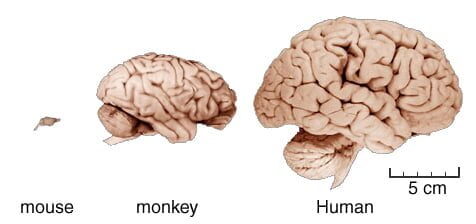To build or repair a car, you generally need to know a fair bit more than just how it works. Yet today we seek to repair brains ravaged by disease in the absence of any real knowledge about how they work, and only a sparse knowledge of how they are built. Transplantation of stem cells or tissues alone is not sufficient to restore function in diseases or injury. New neural components — wetware or hardware — must be integrated in a way that augments existing function, and permits them to successfully compete for resource and control.
What we do know is that the population of the developing cortex by its cellular inhabitants is a mass-migratory event that proceeds with the utmost of precision. A recent publication in Cell uncovered a few of the molecular players in this game. The paper sought to reveal how developments ultimately shape the unique structure of the cortex through the manipulation of tractile and tensile forces. In probing these components, researchers stumbled upon one that makes a mouse brain turn out decidedly more human in appearance.
Highly convoluted and richly textured, the exterior surface of the human brain is instantly recognizable. Nothing says “what a marvelous structure” like a deeply-fissured glob of goo. There are individual differences, but the basic plan reliably emerges in development, day in and day out. With the advent of MRI scanning, we have discovered that, occasionally, people are born with a smooth cortex as a result of certain genetic mutations. For them, severe neurological impairment and early death are inevitable.
The new research reported in Cell, builds on the earlier thesis work of Ron Stahl, who previously demonstrated that the protein product of a gene known as TRNP1 programs cells either for continued multiplication, or to turn into a mature cell which is done dividing. Working together with Magdalena Götz in Munich, they now show how TRNP1 is involved in the specification of radial and tangential expansion of discrete regions of growing cortex.
They also show that one of the main regulatory points is controlling the number of scaffold cells called radial glial cells. These cells are the among the first to populate the cortex, creating, in effect, a rough blueprint for the brain. These cells normally set up an elaborate trusswork upon which neural cells migrate, much like the support lattices frequently installed for growing tomato plants.





















